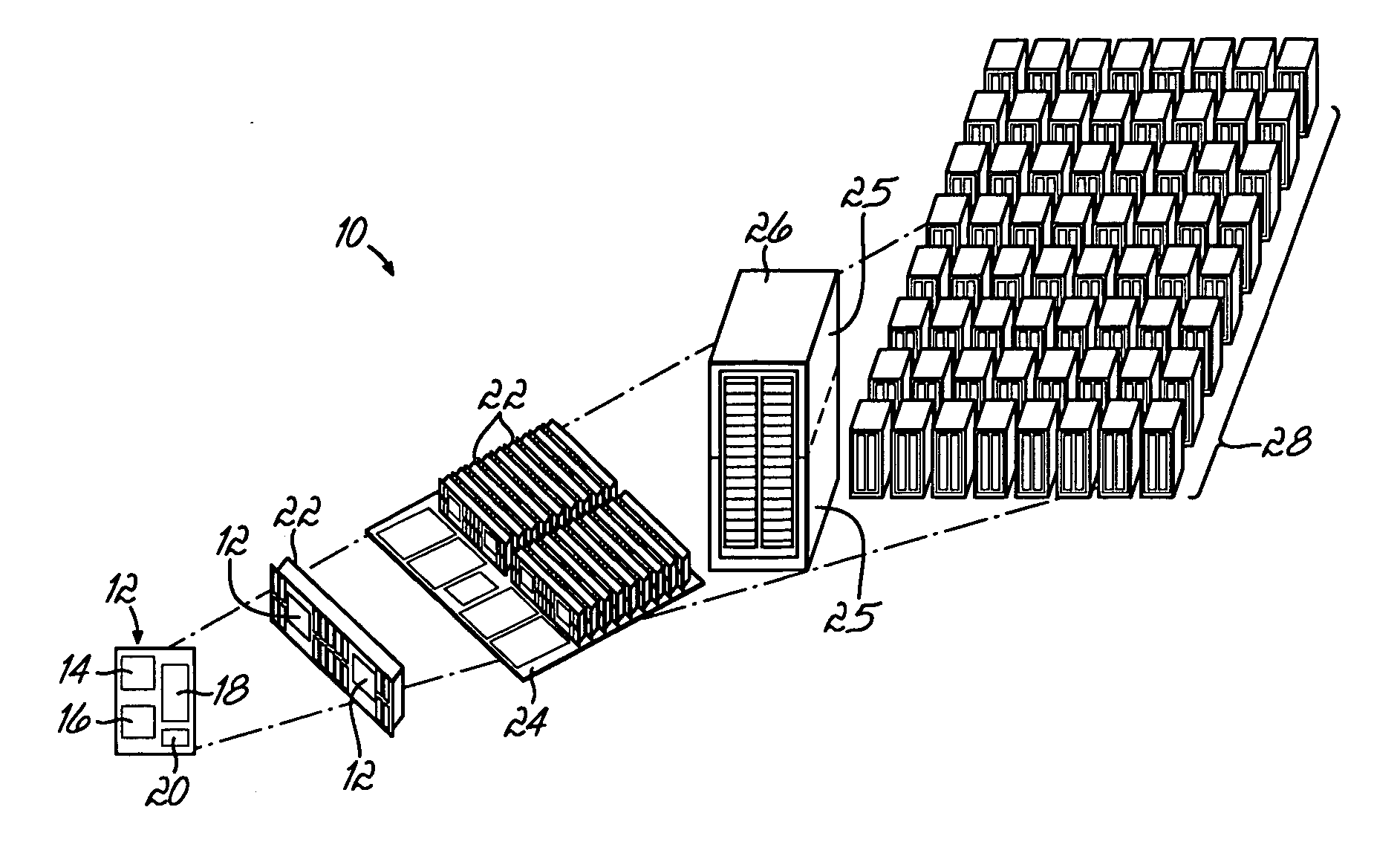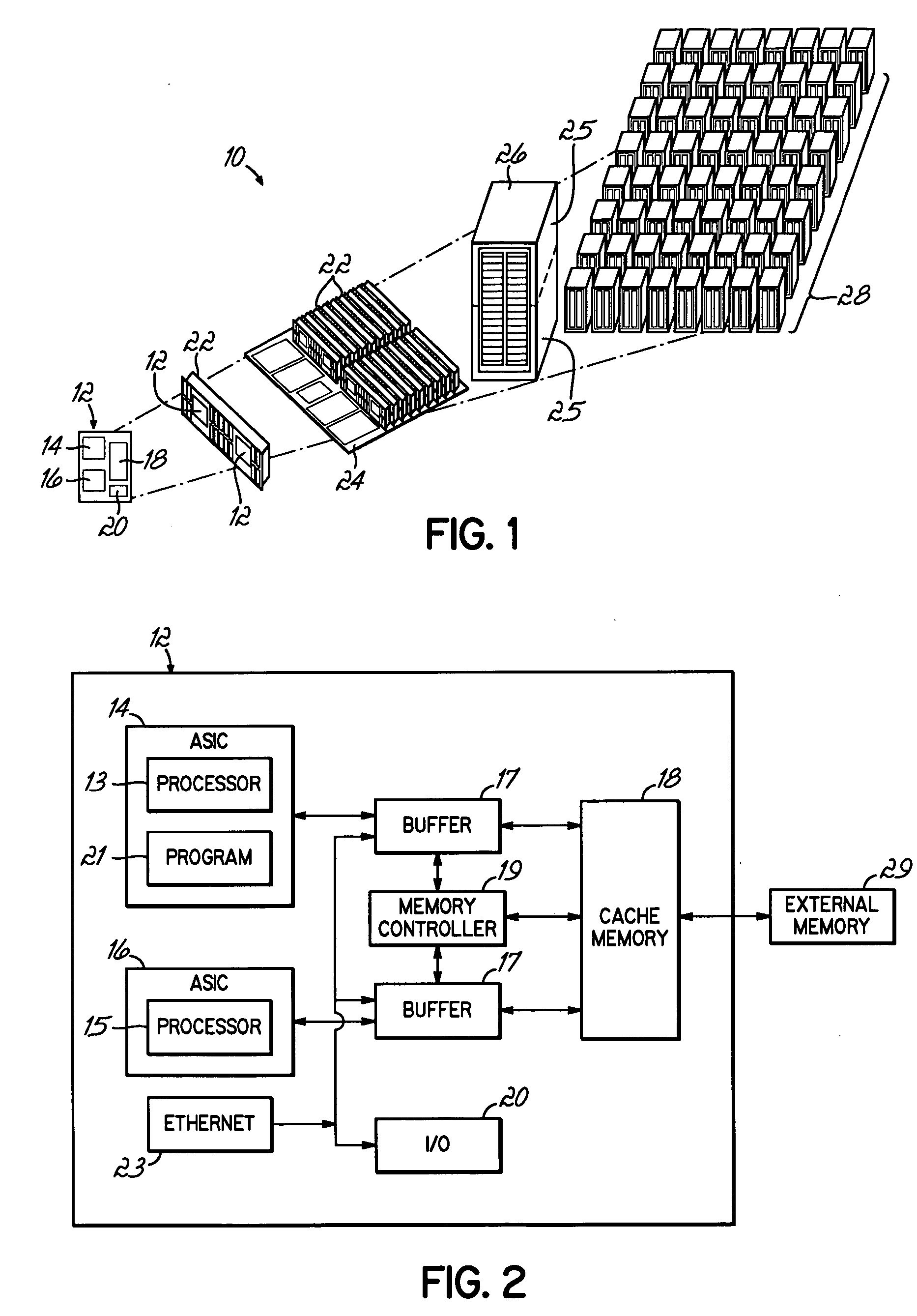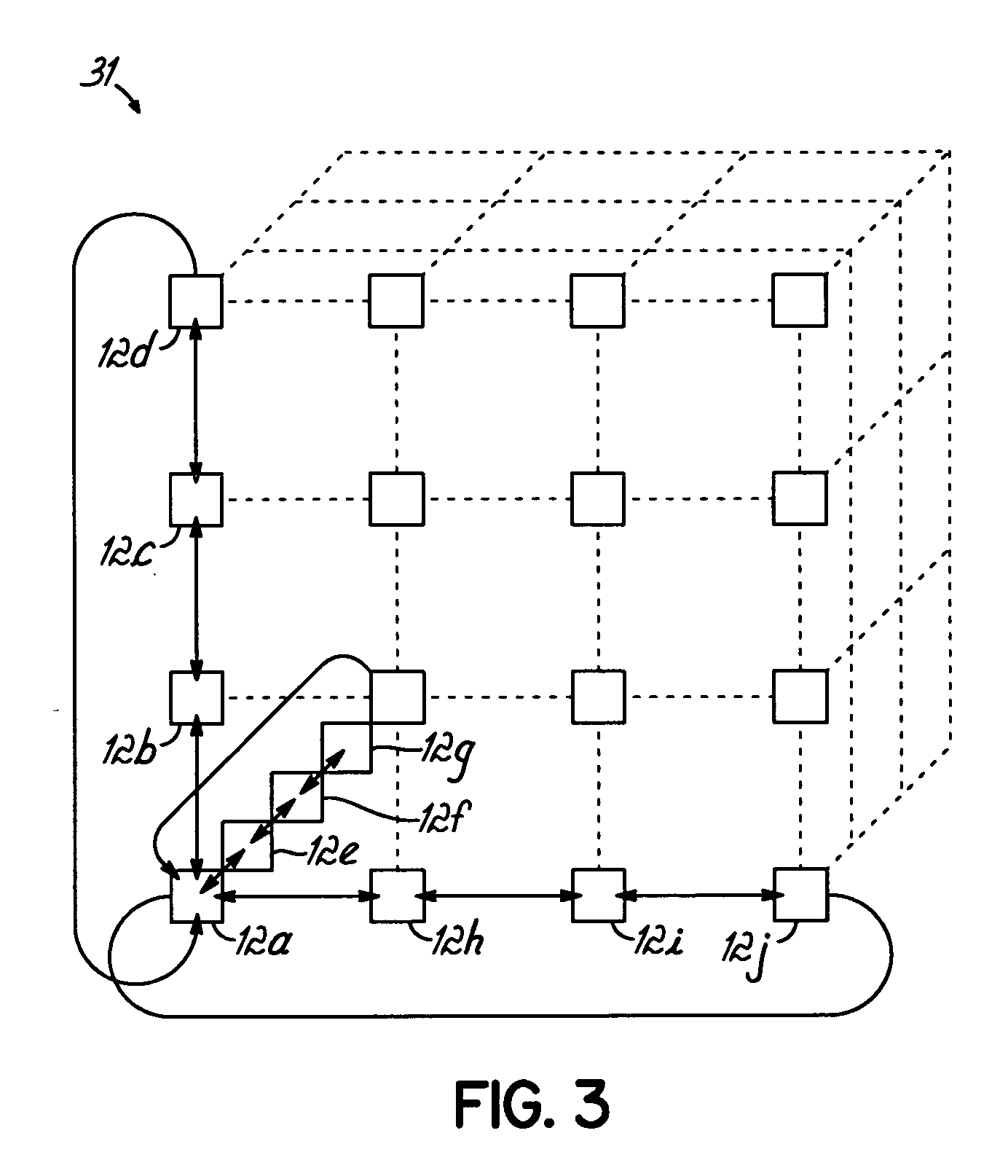All row, planar fault detection system
- Summary
- Abstract
- Description
- Claims
- Application Information
AI Technical Summary
Benefits of technology
Problems solved by technology
Method used
Image
Examples
Embodiment Construction
[0019] Parallel computing systems, such as the BlueGene / L system created by International Business Machines, often include a node cellular architecture. As discuss below in detail, the BlueGene / L system is built from blocks of node midplanes that may be connected through several inter and intra midplane networks. The system may be constructed incrementally, with midplane cells being added to build the larger, final system. As each midplane is added to the system, the hardware and system software must be tested for faulty configurations, including interconnect, processing, memory and software control.
[0020] The primary point to point message passing network for BlueGene / L is a three dimensional torus network, where every node is connected to six other nodes in a mesh, forming a cube of (x,y,z) nodes. For example, a 512 node rmidplane torus consists of an 8×8×8 node arrangement. Torus implies that the nodes on the face of the cube wrap around to connect to nodes on the opposite face....
PUM
 Login to View More
Login to View More Abstract
Description
Claims
Application Information
 Login to View More
Login to View More - R&D
- Intellectual Property
- Life Sciences
- Materials
- Tech Scout
- Unparalleled Data Quality
- Higher Quality Content
- 60% Fewer Hallucinations
Browse by: Latest US Patents, China's latest patents, Technical Efficacy Thesaurus, Application Domain, Technology Topic, Popular Technical Reports.
© 2025 PatSnap. All rights reserved.Legal|Privacy policy|Modern Slavery Act Transparency Statement|Sitemap|About US| Contact US: help@patsnap.com



